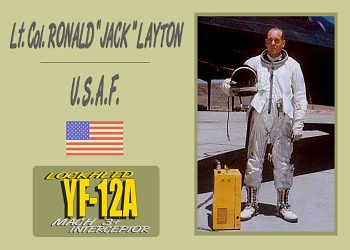
 |
Takeoff, climb, and acceleration were normal. The YF-12A, mission call sign DUTCH 72, continued on to a local intercept training area. An intercept of a B-57 was cancelled due to the radar malfunction, but otherwise the mission was accomplished as briefed. Following completion of intercept training with F-4 and F-106 fighters, Dutch 72 rendezvoused with a KC-135Q tanker for refueling.
Layton then guided the YF-12A back to Edwards and entered the traffic pattern for a landing on Runway 22. He extended the landing gear on the downwind leg and leveled the wings. At this point he pulled the SURFACE LIMITER handle and heard a muffled explosion. He noted that the ball of the TURN AND SLIP indicator was deflected well to the left of center. Less than 10 seconds later the right engine FIRE warning light illuminated and Layton stopcocked the throttle, as per the established procedure for that malfunction.
To maintain speed above single-engine minimum controllable airspeed and to obtain a more optimum altitude, Layton selected afterburner on the left engine and retracted the landing gear, resulting in asymmetrical thrust and yaw. He extended his downwind leg slightly before attempting a left base leg for landing. The crew declared an emergency and requested a visual check by personnel in the control tower. The tower informed DUTCH 72 that no fire was visible at that time.
The asymmetrical thrust of the left engine precluded a successful left turn to final approach, so Layton terminated afterburner and initiated a wide right turn to realign with the runway. At this time, witnesses on the ground reported seeing flames on the airplane's right engine nacelle. Layton was soon able to observe the flames himself through the cockpit periscope.
The fire seemed to be burning out of control. Layton decided that the runway was now too distant to reach and the difficulties in attempting an unassisted ground egress following a lakebed landing were unacceptably hazardous. He decided to abandon the aircraft. "We're going to jump out," he informed the tower.
Layton ordered Curtis to eject, which he did without hesitation. Layton followed a few seconds later. The crew landed in their parachutes near the town of Boron and were assisted by local civilians. The YF-12A continued to fly in a slight climb, then rolled slowly into a right-hand descending turn. It pointed its nose toward the earth and slammed into the ground near the north end of Rogers Dry Lake.
Following a lengthy investigation, the cause was determined to be a fuel-line fatigue failure. The airplane had logged a total of 439.8 flight hours.

|
|
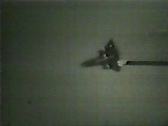
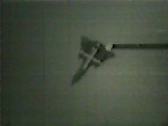
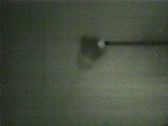
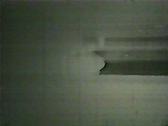
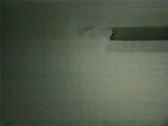 THESE FIVE FRAMES OF LONG RANGE VIDEO FOOTAGE SHOW THE YF-12 WITH ITS RIGHT ENGINE ON FIRE SLAMMING INTO THE DESERT, ITS CREW SAFELY EJECTED ONLY SECONDS BEFORE |
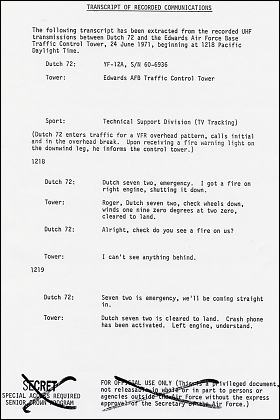
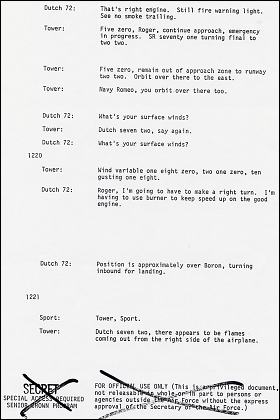
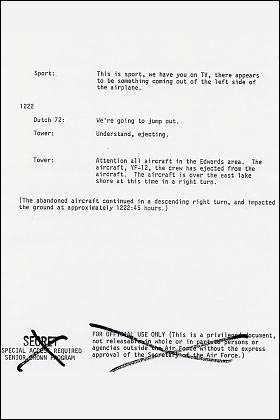 |
